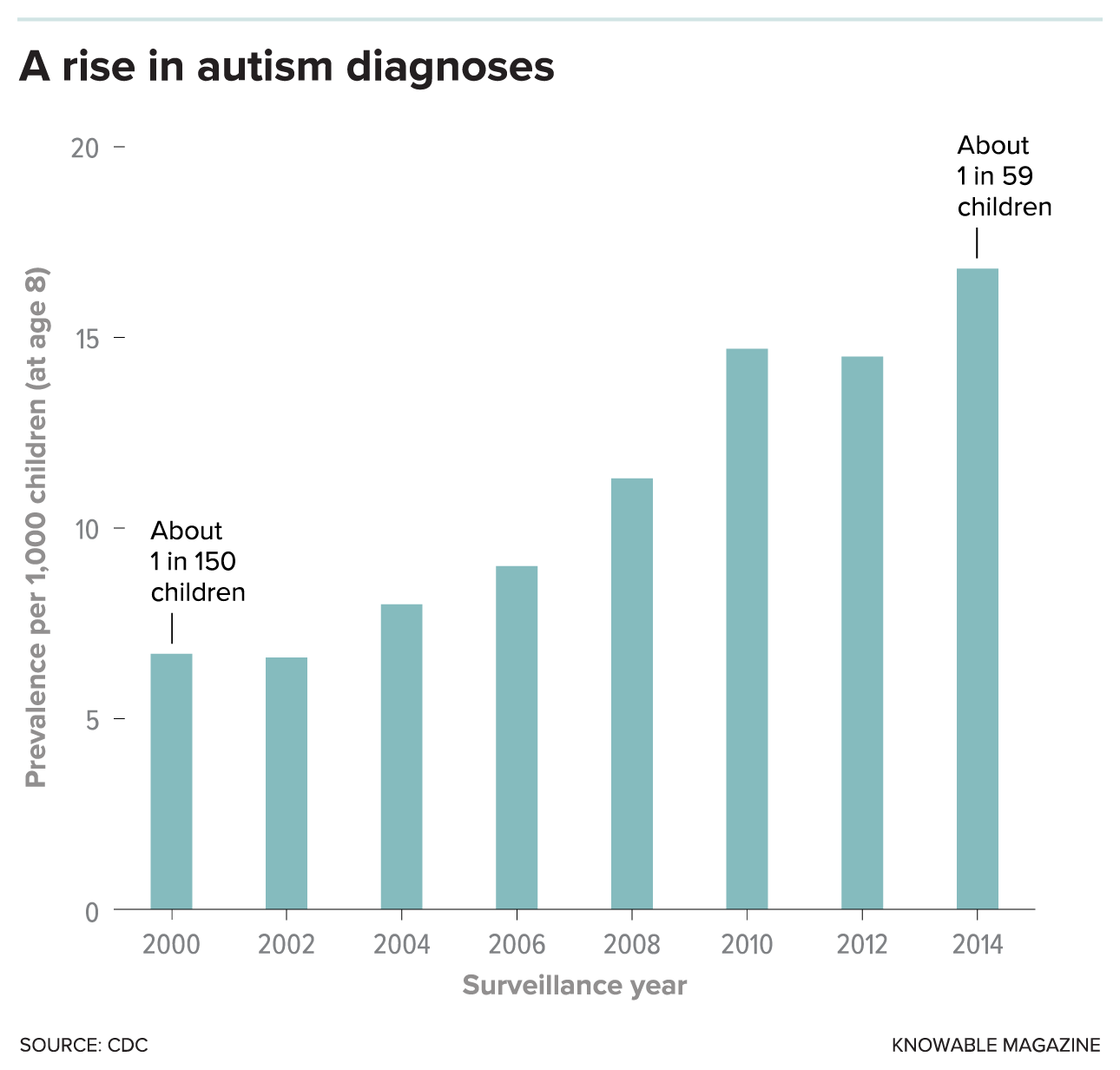We spoke with autistic advocate and autism pseudoscience watchdog Anne Borden King about the continued proliferation of questionable and outright fraudulent “treatments” for autism.
Tag: causation
Emily Willingham Knowable Magazine As alarm grew over autism prevalence at the turn of this century, there was much public talk of a growing “epidemic.” That language has since softened, and it is now clear that many autistic people were there all along, their condition unrecognized until relatively recently. But what is the cause? The emerging narrative today is that there is no single cause—rather, multiple factors, roughly sorted into the categories of genetics and environment, work together in complex ways. Because of this complexity and the hundreds of gene variants that have been implicated, developing human brains may follow many possible paths to arrive at a place on the autism spectrum. And this may help explain something true about autism: It varies greatly from one person to the next. As clinicians view it, autism involves communication deficits and formulaic, repetitive behaviors that present obstacles to establishing conventional relationships. The…
Shannon Des Roches Rosa www.thinkingautismguide.com We’ve said it before, we’ll say it again: There Is No Autism Epidemic. Not even after US estimates for autism prevalence recently rose to 1 in 45. How do we know there’s no autism epidemic? Two reasons: A comprehensive survey of autism prevalence in Korea estimated a rate of 1 in 39, as reported in 2011. There’s no reason US rates should be much different, so the new numbers are likely portraying reality more accurately, rather than indicating reality is changing. Researchers have been saying for years that autism’s prevalence has mostly risen in response to changes in diagnostic criteria, rather than due to environmental triggers or other causation ideas. The role of changing diagnostic criteria in rising autism rates is particularly relevant right now, given that theme’s prominence in Steve Silberman’s award-winning, current bestseller NeuroTribes. Silberman devotes a sizable section of the book to…
There are so many absurd theories about autism causation. Who really would have the wherewithal to follow the growing list of “factors” linked to autism? (Emily Willingham would.)


